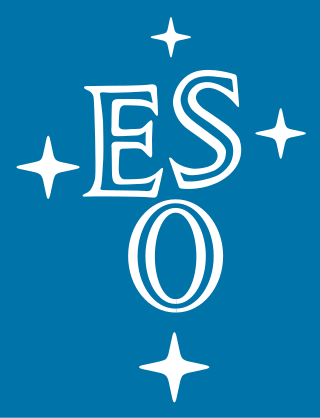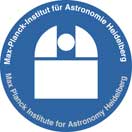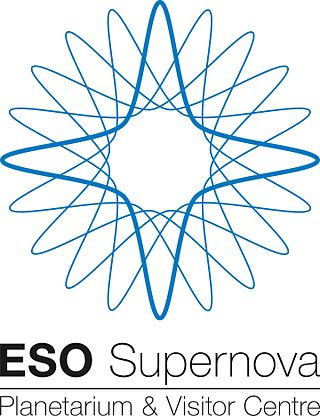
The European Organisation for Astronomical Research in the Southern Hemisphere, commonly referred to as the European Southern Observatory (ESO), is an intergovernmental research organisation made up of 16 member states for ground-based astronomy. Created in 1962, ESO has provided astronomers with state-of-the-art research facilities and access to the southern sky. The organisation employs over 750 staff members and receives annual member state contributions of approximately €162 million. Its observatories are located in northern Chile.
The Joint Institute for Very Long Baseline Interferometry European Research Infrastructure Consortium (JIVE) was established by a decision of the European Commission in December 2014, and assumed the activities and responsibilities of the JIVE foundation, which was established in December 1993. JIVE's mandate is to support the operations and users of the European VLBI Network (EVN), in the widest sense.

Teide Observatory, IAU code 954, is an astronomical observatory on Mount Teide at 2,390 metres (7,840 ft), located on Tenerife, Spain. It has been operated by the Instituto de Astrofísica de Canarias since its inauguration in 1964. It became one of the first major international observatories, attracting telescopes from different countries around the world because of the good astronomical seeing conditions. Later, the emphasis for optical telescopes shifted more towards Roque de los Muchachos Observatory on La Palma.

The Space Telescope – European Coordinating Facility (ST-ECF) was an institution which provided a number of support and service functions primarily for European observers of the NASA/ESA Hubble Space Telescope (HST). It was established in 1984 by the European Space Agency (ESA) and the European Southern Observatory (ESO), and was located at the ESO headquarters in Garching bei München, Germany. The ST-ECF ceased operations on 31 December 2010.
The Cagliari Observatory is an astronomical observatory owned and operated by Italy's Istituto Nazionale di Astrofisica. It is located 20 km away from Cagliari in Sardinia. It was founded in 1899 to study the Earth's rotation.

The Max-Planck-Institut für Astronomie is a research institute of the Max Planck Society (MPG). It is located in Heidelberg, Baden-Württemberg, Germany near the top of the Königstuhl, adjacent to the historic Landessternwarte Heidelberg-Königstuhl astronomical observatory. The institute primarily conducts basic research in the natural sciences in the field of astronomy.

The Astronomical Observatory of Capodimonte is the Neapolitan department of Istituto Nazionale di Astrofisica, the most important Italian institution promoting, developing and conducting scientific research in the fields of astronomy, astrophysics, and space science.

Astronomical Observatory of Trieste is an astronomical center of studies located in the city of Trieste in northern Italy.

The Astronomical Observatory of Rome is one of twelve Astronomical Observatories in Italy. The main site of the Observatory is Monte Porzio Catone. Part of the Istituto Nazionale di Astrofisica since 2002.

The International Year of Astronomy (IYA2009) was a year-long celebration of astronomy that took place in 2009 to coincide with the 400th anniversary of the first recorded astronomical observations with a telescope by Galileo Galilei and the publication of Johannes Kepler's Astronomia nova in the 17th century. The Year was declared by the 62nd General Assembly of the United Nations. A global scheme, laid out by the International Astronomical Union (IAU), was also endorsed by UNESCO, the UN body responsible for educational, scientific, and cultural matters.

The National Institute for Astrophysics is an Italian research institute in astronomy and astrophysics, founded in 1999. INAF funds and operates twenty separate research facilities, which in turn employ scientists, engineers and technical staff. The research they perform covers most areas of astronomy, ranging from planetary science to cosmology.

In 2011, Chile was home to 42% of the world's astronomical infrastructure, consisting principally of telescopes. In 2015, it was estimated that Chile would contain more than 50% of the global astronomical infrastructure by 2030. In the Atacama desert region of northern Chile, the skies are exceptionally clear and dry for more than 300 days of the year. These conditions have attracted the world's scientific community to develop highly ambitious astronomical projects in the Atacama desert.

The European Association for Astronomy Education or EAAE is a non-profit European organization for the promotion of science education in general, and of astronomy in particular.
Universe Awareness or (UNAWE) is an international programme that aim to expose very young children in under-privileged environments to astronomy.

The ESO Supernova Planetarium & Visitor Centre is an astronomy centre located at the site of the European Southern Observatory (ESO) Headquarters in Garching bei München. It offers exhibitions, guided tours and planetarium shows that feature observations made by the telescopes of the European Southern Observatory.
Giampaolo Vettolani is an Italian astrophysicist, scientific director of the National Institute for Astrophysics in Rome (INAF) since 2012.

Agnès Acker, née Keller, is a French astrophysicist, professor emeritus of the University of Strasbourg, founder of the Strasbourg Planetarium and founding president of the Association of French-speaking Planetaries (APLF). Her research focuses on the late stages of solar-type star evolution: planetary nebulae, binarity of nuclei, stellar winds.
Mirjana Pović is a Serbian astrophysicist who works on galaxy formation and evolution at the Ethiopian Space Science and Technology Institute. She was the inaugural laureate of the Nature - Estée Lauder Inspiring Science Award.

Carolina Ödman-Govender was a Swiss physicist and academic who was Professor of Astrophysics at South Africa's University of the Western Cape. She was awarded the 2018 International Astronomical Union Special Executive Committee Award for Astronomy Outreach, Development and Education.














